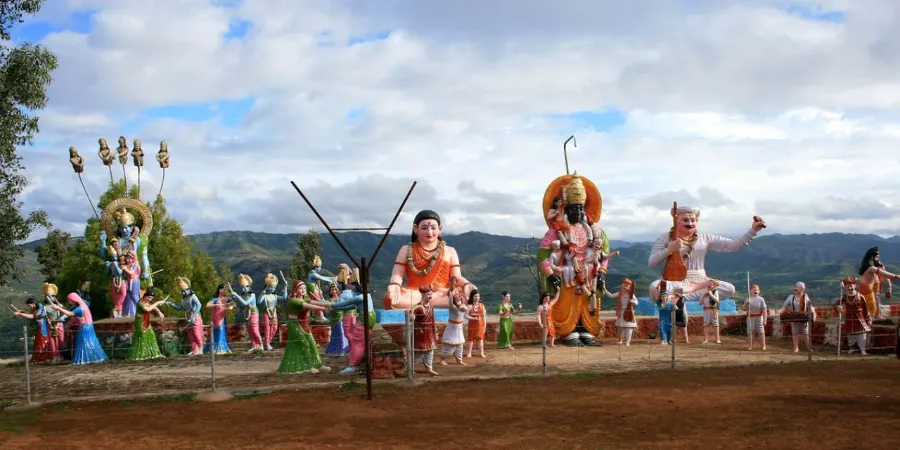10 Temples in Pune You Must Visit Before You Die: Explore Mythology, History, and Spiritual Power.
Prabhuling jiroli
Pune, known as the cultural capital of Maharashtra, is home to some of the most revered and historically significant temples in India. These temples not only serve as spiritual centers but also offer a rich glimpse into the region’s history and mythology. Each temple tells a unique story, whether it’s dedicated to Lord Shiva, Lord Ganesha, or Goddess Durga. For spiritual seekers and history buffs alike, visiting these temples is a journey through Pune’s religious and cultural heritage.
In this blog, we’ll explore the 10 temples in Pune that you must visit at least once in your lifetime. We’ll delve into their mythological significance, historical heritage, and provide tips on how to reach them, the best time to visit, and other helpful tips.
1. Dagdusheth Halwai Ganpati Temple
Mythology & Significance: One of Pune’s most famous temples, the Dagdusheth Halwai Ganpati is dedicated to Lord Ganesha. The temple was built by a wealthy sweet maker, Dagdusheth, in honor of his son who died during a plague epidemic. It is believed that visiting the temple and seeking blessings from Lord Ganesha helps remove obstacles and bring prosperity.
How to Reach:
- By Road: Located in the heart of Pune, 2 km from Pune Railway Station.
- By Public Transport: PMPML buses and auto-rickshaws are easily available.
Best Time to Visit: Ganesh Chaturthi (August-September)
Tip: Visit during the early morning hours for a peaceful darshan, as the temple can get crowded during the day.
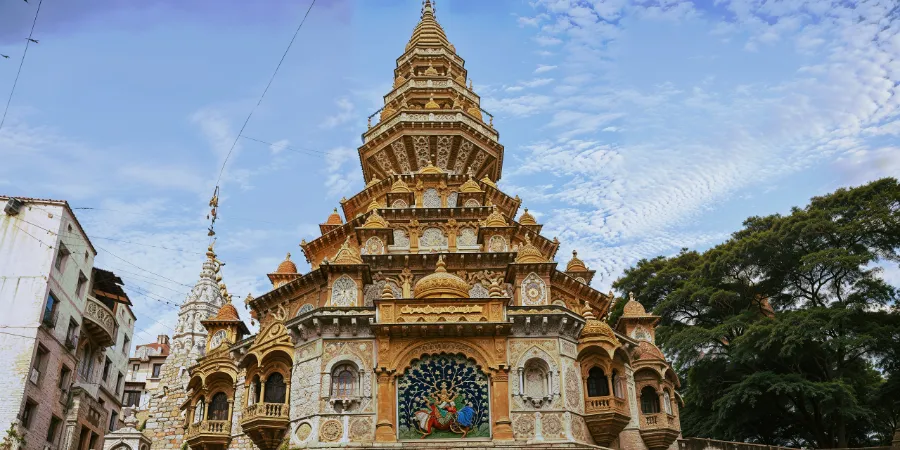
2. Parvati Hill Temple
Mythology & Significance: The Parvati Hill Temple is a cluster of temples located atop a hill, offering panoramic views of Pune. The main temple is dedicated to Lord Shiva, and it is believed that the hill was once the meditation spot of many saints. The temple complex also houses shrines of Goddess Parvati, Vishnu, and Kartikeya.
How to Reach:
- By Road: Located 5 km from Pune Railway Station. Cabs and auto-rickshaws are easily available.
- By Public Transport: Regular PMPML buses serve the area.
Best Time to Visit: Early morning for a scenic view and a serene experience.
Tip: Be prepared for a climb of around 103 steps to reach the temple complex.
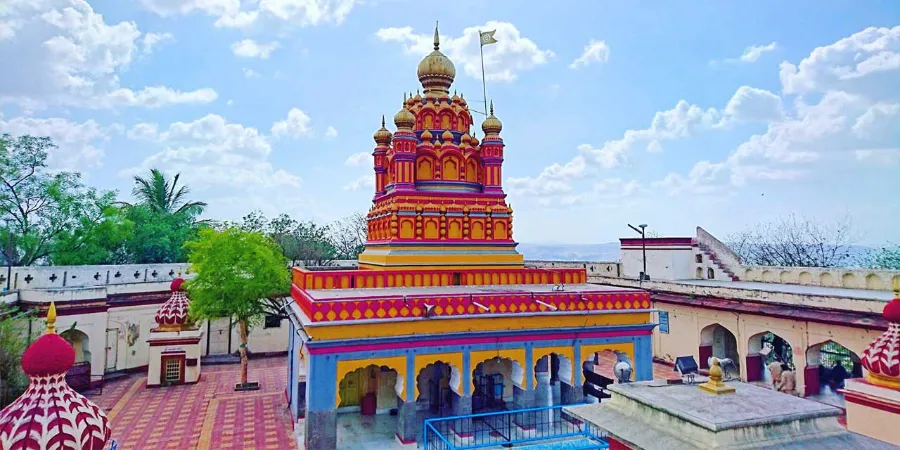
3. Chaturshringi Temple
Mythology & Significance: The Chaturshringi Temple is dedicated to Goddess Chaturshringi, a form of Goddess Durga. It is believed that a devotee of the goddess was instructed by her in a dream to build a temple at this site. The temple is located on a hill and symbolizes strength and power.
How to Reach:
- By Road: Located on Senapati Bapat Road, about 6 km from Pune Railway Station.
- By Public Transport: PMPML buses and cabs are readily available.
Best Time to Visit: Navratri (September-October)
Tip: Visit during Navratri when the temple is beautifully decorated, and celebrations are in full swing.
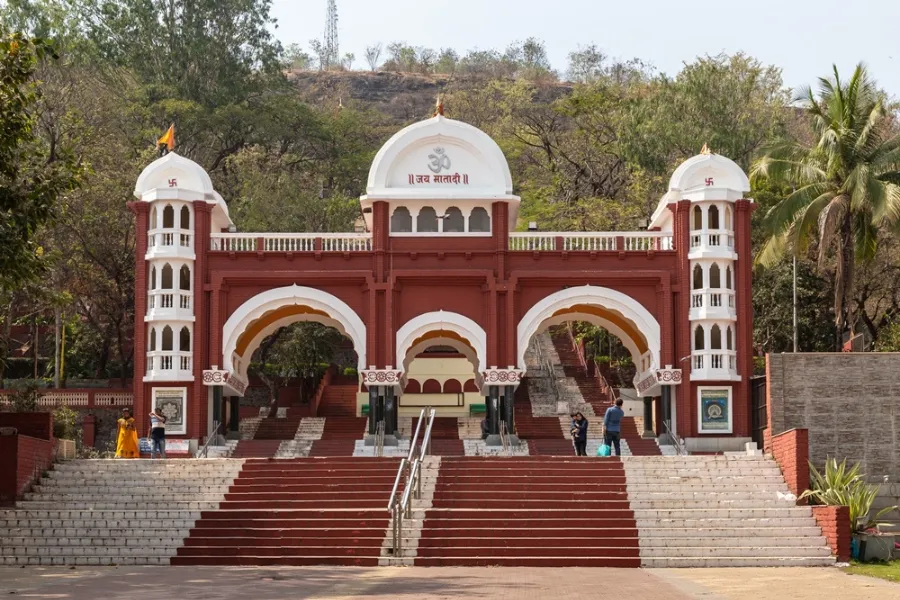
4. Pataleshwar Cave Temple
Mythology & Significance: Pataleshwar Cave Temple is an ancient rock-cut cave temple dedicated to Lord Shiva. The temple dates back to the 8th century and is one of the oldest temples in Pune. The name "Pataleshwar" refers to the "Lord of the Underworld," and it is believed that worshipping here brings peace and harmony.
How to Reach:
- By Road: Located on Jangali Maharaj Road, 2.5 km from Pune Railway Station.
- By Public Transport: Easily accessible by PMPML buses and auto-rickshaws.
Best Time to Visit: October to March
Tip: Combine your visit with a trip to the nearby Jangali Maharaj Temple.
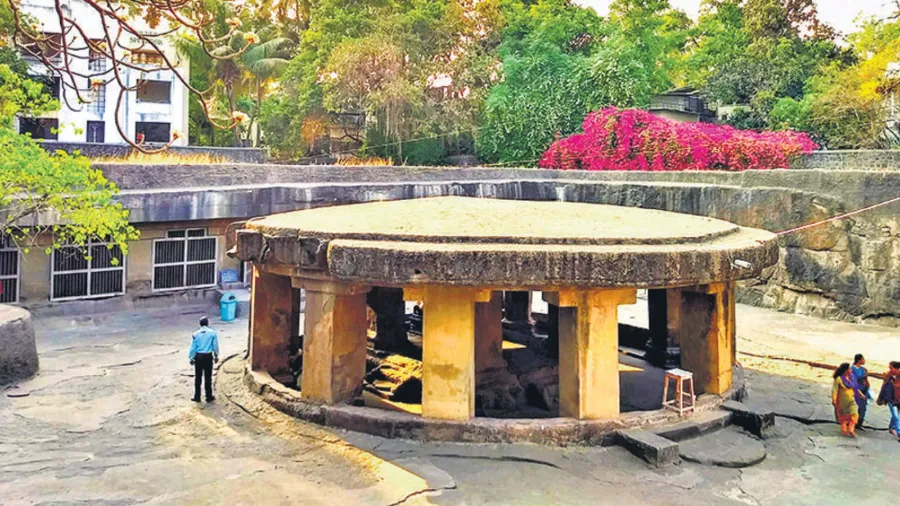
5. Kasba Ganpati Temple
Mythology & Significance: Kasba Ganpati is the Gram Daivat (patron deity) of Pune, and the temple is dedicated to Lord Ganesha. The temple has historical importance as it was built by Jijabai, the mother of Chhatrapati Shivaji Maharaj, when they settled in Pune. The temple is known for its cultural significance and is the first Ganpati idol to be immersed during the Ganesh Chaturthi festival.
How to Reach:
- By Road: Located in Kasba Peth, 1.5 km from Pune Railway Station.
- By Public Transport: Auto-rickshaws and buses frequently ply the route.
Best Time to Visit: Ganesh Chaturthi (August-September)
Tip: Don’t miss the grand Ganesh Chaturthi procession starting from this temple.
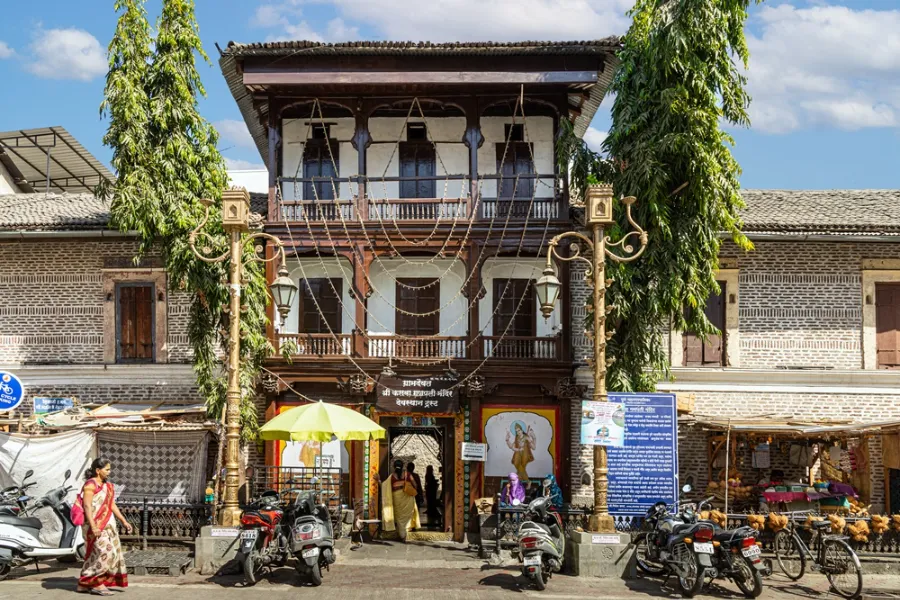
6. Bhuleshwar Temple
Mythology & Significance: Bhuleshwar Temple, located on a hill near Pune, is dedicated to Lord Shiva. It is believed that the Pandavas visited this temple during their exile. The unique architecture features classical carvings and intricate stonework, and it is believed that wishes made here are fulfilled.
How to Reach:
- By Road: Located 55 km from Pune, near Yavat on Pune-Solapur Highway. Cabs and buses are available from Pune.
Best Time to Visit: November to February
Tip: Carry water and snacks, as there are limited facilities near the temple.
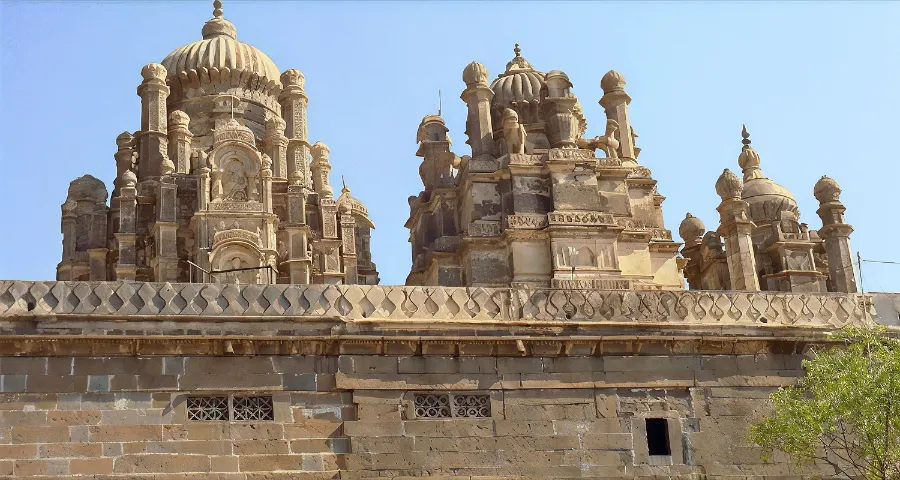
7. Katraj Jain Temple
Mythology & Significance: The Katraj Jain Temple, also known as the Trimurti Digambar Jain Temple, is dedicated to Lord Mahavir, the 24th Tirthankara. The temple is located on a hill, offering scenic views of the surrounding landscape. It is a place of peace and meditation for Jain devotees.
How to Reach:
- By Road: Located 10 km from Pune Railway Station, in Katraj. Easily accessible by road.
- By Public Transport: Local buses and cabs can be hired to reach the temple.
Best Time to Visit: October to March
Tip: Visit during early morning hours to experience the tranquility of the surroundings.
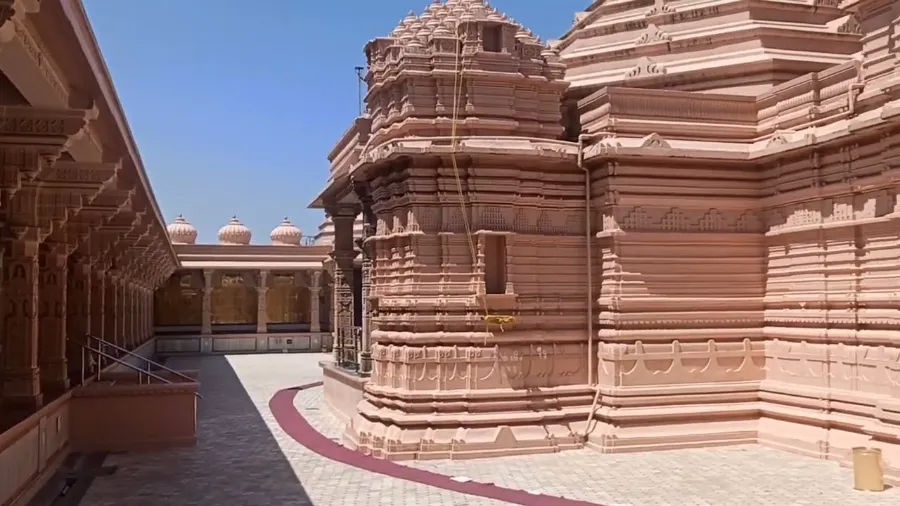
8. Baneshwar Temple
Mythology & Significance: Baneshwar Temple, located in the middle of a lush forest, is dedicated to Lord Shiva. It is said that the temple was built in the 17th century and is known for its ancient architecture and natural beauty. The temple complex also has a small waterfall and a nature trail nearby.
How to Reach:
- By Road: Located 36 km from Pune, near Nasrapur village. Accessible by cabs or private vehicles.
Best Time to Visit: Monsoon (June to September) for scenic beauty.
Tip: Carry your own snacks and water, as there are few facilities nearby.
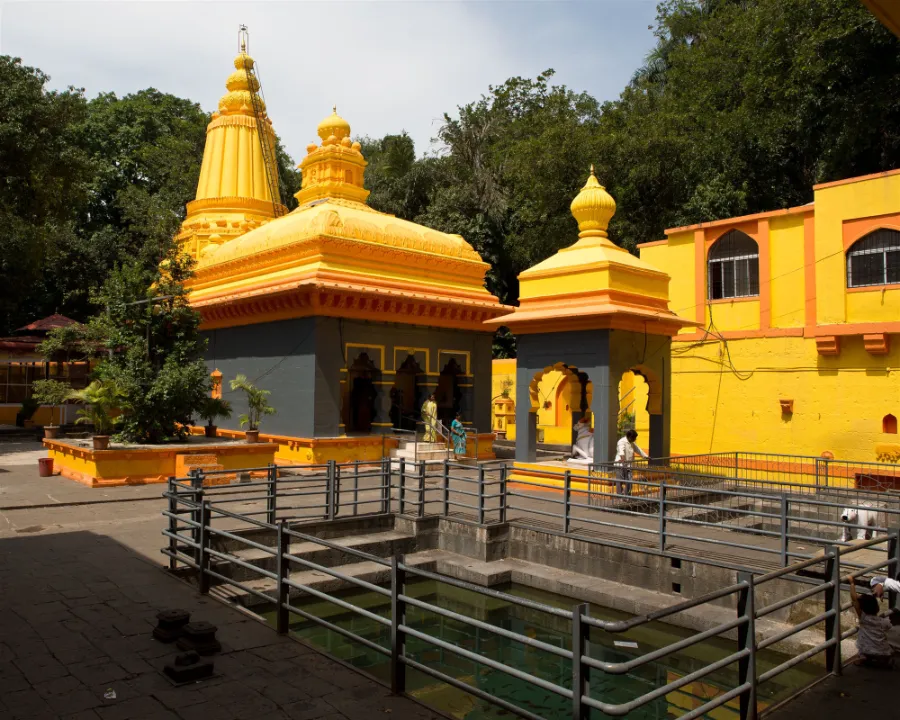
9. ISKCON NVCC Temple
Mythology & Significance: Dedicated to Lord Krishna, the ISKCON NVCC Temple is a part of the global ISKCON community and offers a peaceful spiritual experience. The temple is a modern architectural marvel and a center for spreading the teachings of Lord Krishna.
How to Reach:
- By Road: Located in Katraj, around 10 km from Pune Railway Station.
- By Public Transport: Cabs and PMPML buses are available.
Best Time to Visit: Janmashtami (August)
Tip: Attend the Govinda Festival for a lively and spiritual celebration of Lord Krishna.
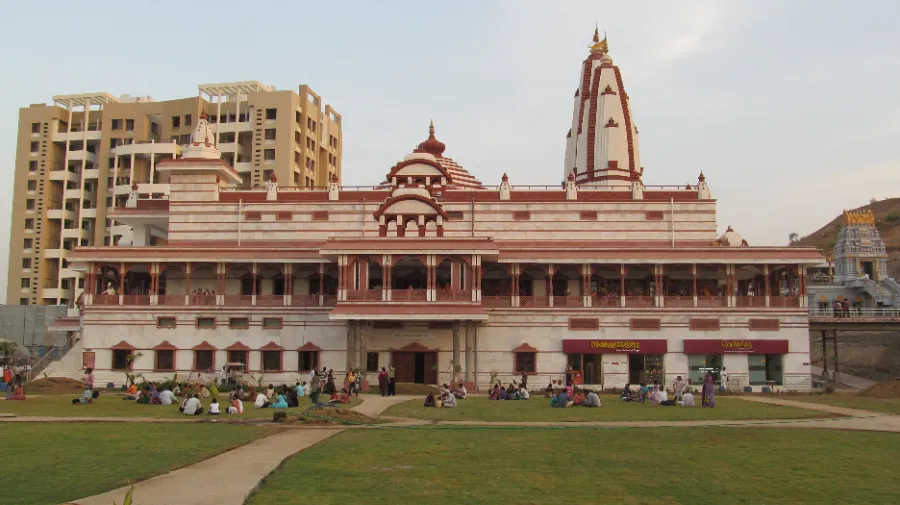
10. Neelkantheshwar Temple
Mythology & Significance: Located atop a hill, Neelkantheshwar Temple is dedicated to Lord Shiva and is known for its scenic location amidst nature. It is believed that Lord Shiva meditated here, and devotees come to seek blessings for mental peace.
How to Reach:
- By Road: Located 40 km from Pune, near Panshet Dam. Accessible by cabs or private vehicles.
Best Time to Visit: October to February
Tip: Wear comfortable shoes, as there is a short trek involved to reach the temple.
